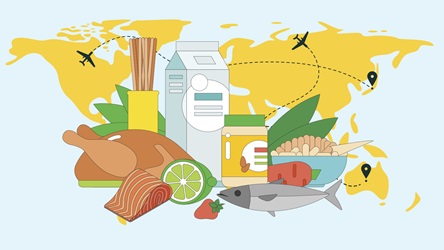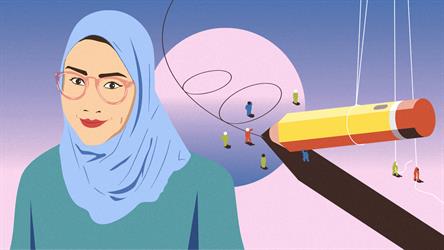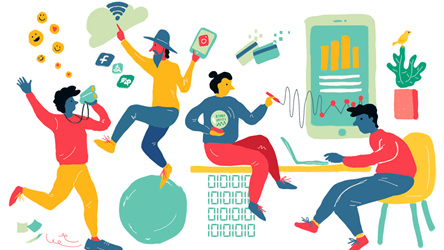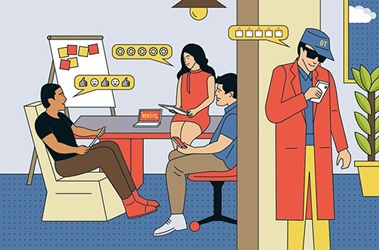A Push for Digital Services
02363633f22f6eceb9b0ff0000fcc945.jpg)
The red, wet newborn lets out a lusty scream as she finally emerges, making her entrance into the world. Soon, her parents are holding the swaddled babe in their arms. Dad’s phone beeps and the screen lights up. It’s a friendly reminder to register the baby’s birth. An e-service lets Dad or Mum do that with a just a few clicks on the phone.
Nine years later, the family has added two sons, with the youngest finally joining his siblings in primary school. By this time, another e-service allows the parents to update all three children’s particulars, from their dates of birth to any allergies, with the school at one go.
Six months before their passports expire, a beep alerts Mum. The e-service takes her through a few easy steps to snap fresh photographs of her kids and kick-start the document renewal process.
When the boys grow up, they will enlist for National Service with a press of the button. There’s no need to provide their health and education details as those are already in a central data platform.
These scenarios could one day become reality for Singaporeans as the country hurtles towards a future of pushed public digital services. One where alerts are automatically triggered for compulsory government-related online operations, thanks to the intelligent computer that tracks your needs as you pass through the different stages of life.
The delivery of public services will become more effective and efficient, and “one of the biggest value-add to the citizen is saving time”, says Mr Tony Lim, Director of the Ministry of Finance (MOF)’s Digital Government Directorate, or DGD, which is leading the charge in the Public Service’s digital service delivery ambitions.
Together with the Design, Innovation & Integration, Service Strategy, Capabilities (DISC) unit at the Public Service Division (PSD), and the Government Technology Agency (or GovTech), it makes up the Digital Services trilateral committee formed in 2015.
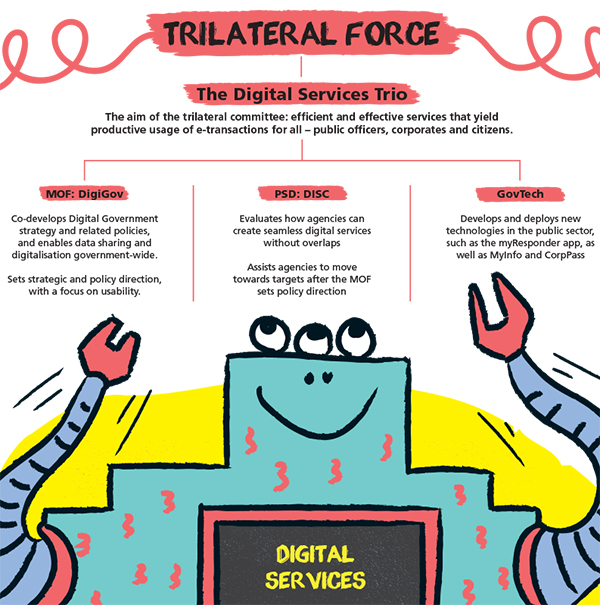
The MOF, being connected with chief information officers and chief data officers across the Service, looks at the opportunities and implications of digitalisation and data sharing in a connected public service. Hence the DGD lays out the strategies, policies and oversees digital projects, while DISC seeds bright e-service ideas in public agencies and guides them through the design process. GovTech, with its IT expertise, is the “ops person” that refines and rolls out new technologies or platforms.
Pushing further
In fact, in the online world, anticipatory services are already the norm. People are used to tech giants like Google and Amazon prompting them with search suggestions and products they might like, based on their search and purchase histories.
And they are also starting to expect equivalent services from the public sector. “Citizens feel, as taxpayers, [they are] customers. They expect a top-notch government … that makes [its services] really efficient and user-friendly,” says Ms Yan Jiejun, Organisational Development Lead at the PSD.
And governments could do even more, says Queensland University of Technology Head of Information Systems Michael Rosemann. “One step further is the vision of a predictive government. In this case, the government would offer services before a life event even occurs,” Dr Rosemann writes in Australian news site The Conversation.
Arguably one of the first governments to provide e-services, Singapore may still be in a position of strength but “there’s clearly room for improvement”, says Mr Lim at the DGD.
“We have to revisit processes to see if we can redesign or streamline them. Can steps be removed and made even simpler for the citizen?” he adds.
The Public Service’s early adoption of IT means many services still run off separate “legacy systems”, or older systems. There is a need to transition to newer systems, says Mr Eugene Lim, formerly Deputy Director at DISC, which is tasked to help agencies make these adjustments. He is now Senior Director (Policy & Corporate Development, People & Government Engagement) at the People’s Association.
Through talks, workshops and forums, DISC presents the value of digital possibilities to agencies, and invites them to come on board to tap new e-services or refresh existing ones.
“DISC might have the ideas, but eventually it is up to the agencies to weave these ideas into their service delivery because they know best,” says Mr Eugene Lim.WeChat: The E-Hub in your hands
.jpg)
It is the darling app of China. Throngs use it for everything, from scanning QR codes of business contacts and booking theatre tickets, to splitting dinner tabs – all with just a few taps on the smartphone. Since February 2015, WeChat users have been able to access a slew of e-government services, including checking the value of transport cards or traffic offence records, and booking appointments for entry-exit documents processing and marriage registration, the Shanghai Daily reported.
Service at key moments
For example, how might the government create services or programmes that help citizens at key phases of a person’s life?
Governments in New Zealand and Estonia are already launching predictive services, centred around moments of childbirth and retirement.
New Zealand’s SmartStart, for instance, will provide expectant parents with personalised updates from government agencies, its Minister of Internal Affairs Peter Dunne announced in November. Parents will also get information about early childhood services in an easy-to-understand timeline.
Meanwhile, Estonia’s vision is “zero bureaucracy and invisible government”, in the words of Prime Minister Taavi Rõivas. Parents register their newborns over email, and later on receive reminders about vaccinations and school registrations.
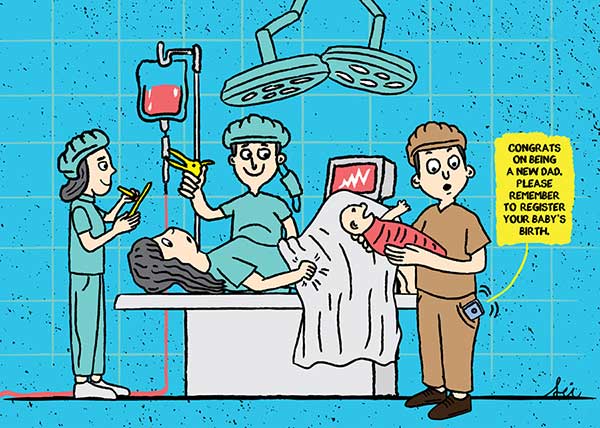
Going further, Mr Eugene Lim offers a scenario: If an elderly person had a fall and is hospitalised, and that information is in the e-records, could the government not use intelligent algorithms, powered by data analytics, to suggest the next steps – such as hiring a helper?
While that kind of help may still be some time away, a new e-service easing paperwork for parents with school-going children will soon be available.

Currently, parents must track the milestones of their child’s journey: from school registrations and parent-teacher meetings to the signing of consent forms for learning journeys. Even if the transactions are done electronically, parents with two children or more would have to log in again for each child, sometimes through different portals.
But what if the parent can log into a single portal and settle all his kids’ matters at one go?
This will be possible with the Parents Gateway, a project of the Ministry of Education (MOE) and GovTech currently being tested in five schools. The online portal will make it more convenient for parents to interact with schools on administrative and financial matters, and reduce dependence on paper forms. The portal covers key interactions in a school year, such as the updating of personal records at the start of the year, approval and payment for learning journeys, and keeping parents posted on the student’s progress (academic and non-academic) throughout the year.
From obtaining parental consent to the collection of charges, many interactions in schools involve paper forms going from the general office to the teacher, and then to the child, who hands it to her parents. This chain is then repeated in reverse order.
By making the process digital, the MOE hopes to reduce teachers’ workload. “We believe this will make school-parent interaction at each moment of their child’s student life more convenient and delightful,” MOE Chief Information Officer Tan Bee Teck says.
Public officers breathe easier
In easing the process for both citizens and corporates (see sideboxes), work becomes easier for public officers too.
The DISC team is working with the Ministry of Trade & Industry (MTI) to smoothen e-transactions for businesses.
Businesses that operate across sectors have to deal with many different reporting requirements. “How do we make things easier … so that they can focus on their business, rather than spend a lot of effort on meeting regulatory requirements?” says Mr Eugene Lim.
So, DISC is facilitating discussions for public agencies to share their regulatory requirements with each other.
“Since the government has a lot of information, why not use it to prompt businesses to self-serve more?” Mr Eugene Lim continues. “By giving these automated prompts, it would free up public officers to focus on data analytics and scrutinise non-compliance cases – without having to apply a compliance load on every business.”
Meanwhile, GovTech is working on systems for citizens to receive alerts when they need to pay taxes. Its Chief Information Officer Chan Cheow Hoe imagines the day when taxes can be paid just by tapping a smartphone notification – without having to log into an online service.
MyInfo
ef353633f22f6eceb9b0ff0000fcc945.jpg)
One set of informationto auto-fill all forms – that’s the premise of MyInfo, a consent-based data platform launched in May that has garnered 100,000 users thus far. Just as you would use your Facebook or Google account to access various online services, MyInfo lets you do the same for government services. SingPass users who have opted in provide their personal information only once. The next time they transact online with a public agency, an e-Service form pulls data from their MyInfo profile, with just one tap on the “Retrieve MyInfo” button – doing away with repeated form-filling. Besides details such as birth date, registered home address and marital status, citizens can also choose to input other details such as occupation.
Each e-Service asks for your consent before retrieving your data in your MyInfo profile. This is to address privacy concerns and give users some sense of control. To date, 10 public agencies are in MyInfo’s pilot phase. Some 40 agencies are expected to link to it in the next two years when the MOF offers all SingPass-authenticated services on MyInfo.
Making tomorrow happen
But as exciting as the prospects of a predictive government are, the slew of digital service revamps will not happen overnight.
Ms Yan, who looks at change management, points out the challenges of taking on digital projects that involve many agencies: “In an organisation, it is already challenging for an IT department to win over all the officers and senior management to adopt and like the new system. To implement successful change across multiple agencies using the same shared system, it’s a massive undertaking.”
To ensure that the implementation of digital projects is sound and user experience of those services is optimised, they go through a Digital Services Accelerator programme, run by GovTech and The Human Experience Lab for design thinking, which is part of DISC at the PSD.
GovTech does this via usability tests at its Digital Experience Design lab. Using eye-tracking, for instance, the lab tracks what test users see, how they browse and what is intuitive to them. It then takes into account these behaviourial patterns when designing or improving websites or apps.
One lesson, says Mr Lim at the MOF, was the logout button on the MyInfo page on mobile phones. To keep a “clean look”, the button was initially put in a dropdown menu. But because users habitually looked for it in the top right corner of the screen, the logout button was moved back to that usual spot.

SingPass user Mr Lennard Phua took part in the usability testing for MyInfo. He now uses the service for his CPF house loans, SkillsFuture courses and to pay road tax. “It really helps [that] I don’t have to keep keying in my details,” says the head of marketing at a gems company.
Incorporating test-based changes has dual benefits.
Mr Eyung Lim, Deputy Director of Product Design Development at GovTech, says: “The digital service design and implementation are now guided by data through user testing. This allows us to make better decisions based on real user experiences, without the need to guess what works best for the citizen.
“And a better citizen experience means fewer complaints, leaving public officers with more time to focus on better service.”
Mr Eugene Lim adds: “Our guiding principle is always to ask ourselves – are we making life easier for our public officers and citizens? It’s about helping government agencies do their jobs more easily and serve Singaporeans better.”
CorpPass
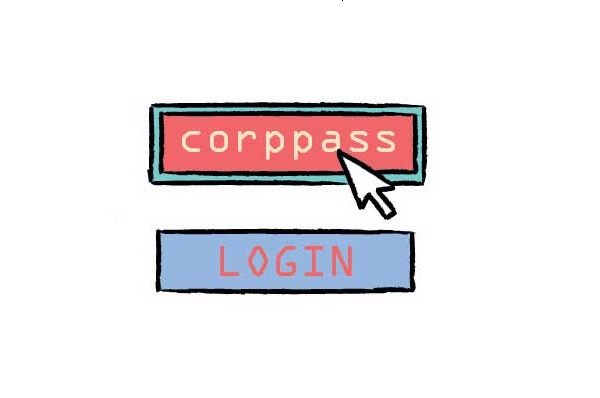
Singapore Corporate Access, or CorpPass, is a one-stop platform to manage e-government transactions securely. It is the business version of a citizen’s SingPass. GovTech explains on its website that “employees who go on leave tend to share their personal SingPass ID and passwords with colleagues to help perform business transactions like filing corporate tax or applying for permits and licences”. Having separate login IDs for personal and corporate matters, via CorpPass, hence protects information for both businesses and employees. CorpPass services include Hawkers Online and Food Hygiene, and Business Grants Portal. By 2018, 130 more services from 60 public agencies will require a CorpPass login.
- POSTED ON
Nov 1, 2016
- TEXT BY
Lynda Hong
- ILLUSTRATION BY
Mushroomhead
-
Deep Dive
Strengthening Singapore’s Food Security
-
Feature
Why DBS Wants To Be Gandalf




